Cameras: How it Works, Innovations and Making a Home-made Camera
A camera is a small box free of light inside. When a picture is taken, light enters through a hole and falls on the uncovered film inside. The film is made into a negative by soaking it in a chemical bath. The negative is used to make pictures.
When using a camera, some of the light reflecting from the subject enters through the hole, or aperture, and is focused by the lens system, producing an image on the emulsion side of the film. The shutter controls the length of time the light falls on the film.
A box camera
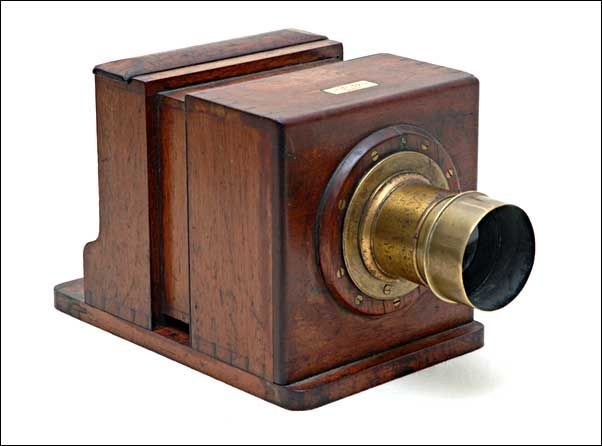
source
The simplest camera is a box camera. The shutter speed is unchangeable, so its use is limited to well-lighted, still subjects. Since it has a fixed focus, the distance from the camera to the subject must be a certain number of feet. The size of the box camera's aperture cannot be changed.
Most other cameras have variable shutter speed, aperture, and focus. The folding camera is compact, as is the miniature camera, which uses very small film. When viewing through a reflex camera, a film-size image is seen. The largest hand held camera is the press camera used by news photographers. The view camera is so large it must be held on a tripod. Self-printing cameras contain developing chemicals and produce a finished print within one minute. The movie camera takes many pictures per second with a stop and go film advance mechanism. The printed film is projected on a screen to produce an illusion of motion.
A vintage "folding camera" made by Kodak
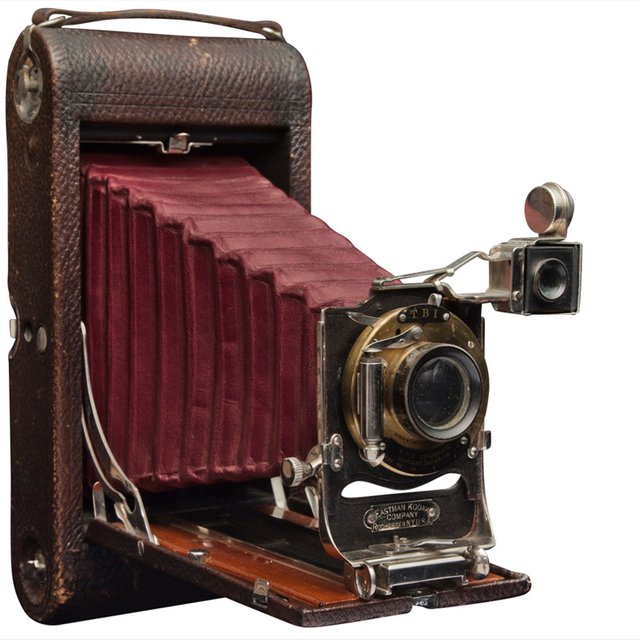
source
A miniature camera made by Petie
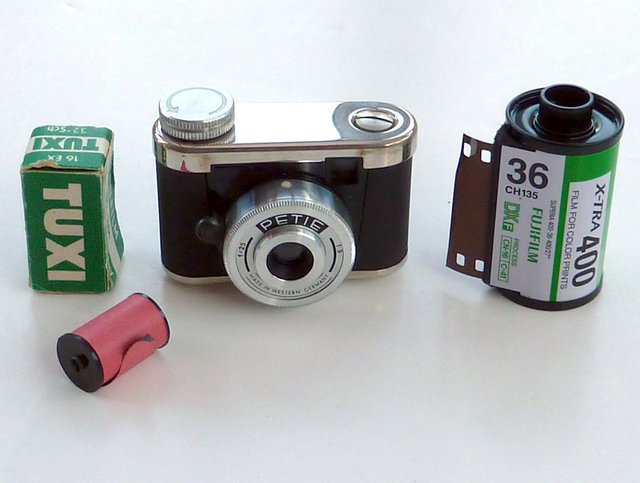
source
A reflex camera
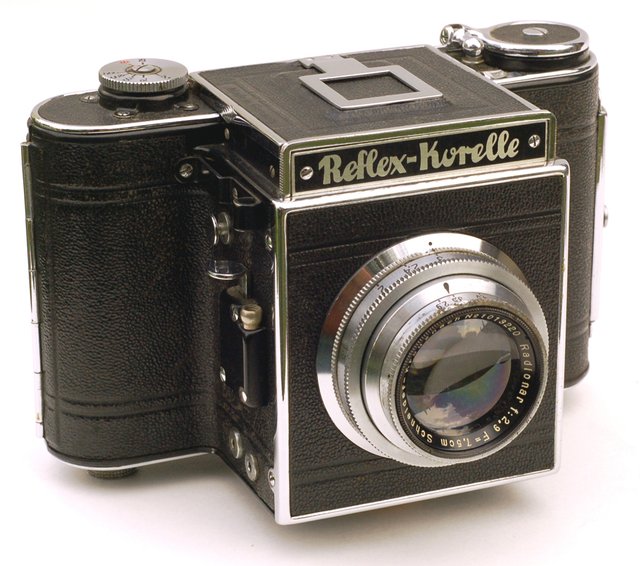
source
A press camera
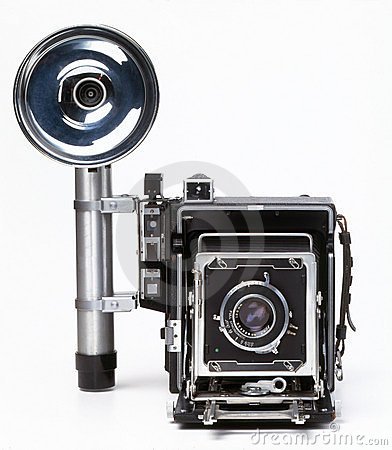
source
View camera
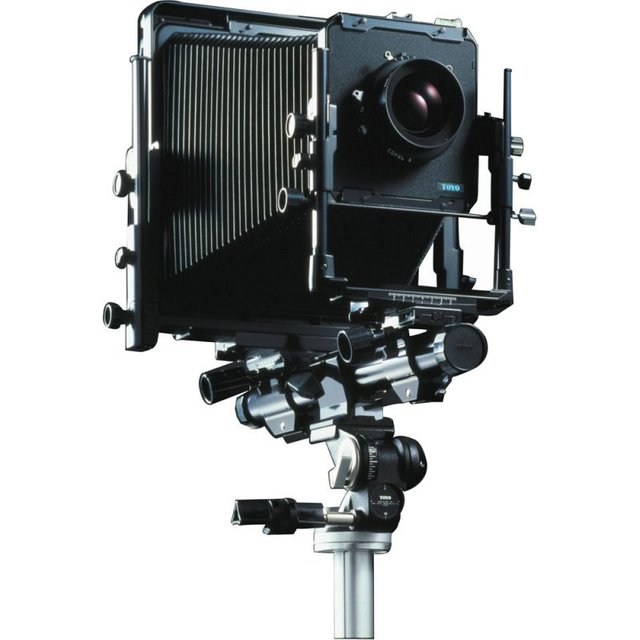
source
Self printing camera made by Polaroid
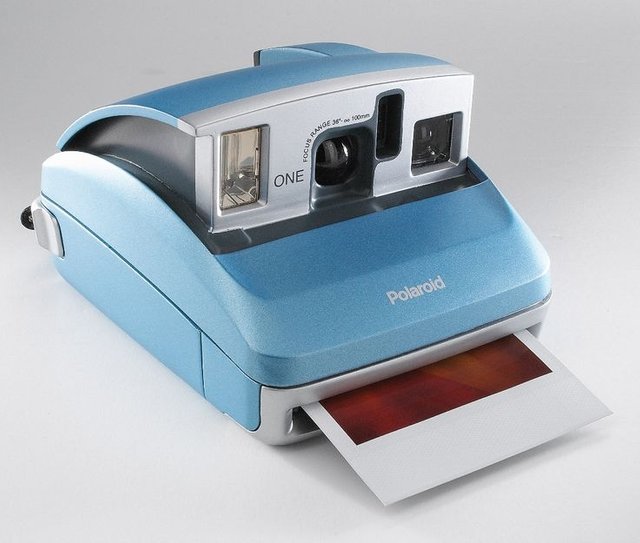
source
Vintage movie camera
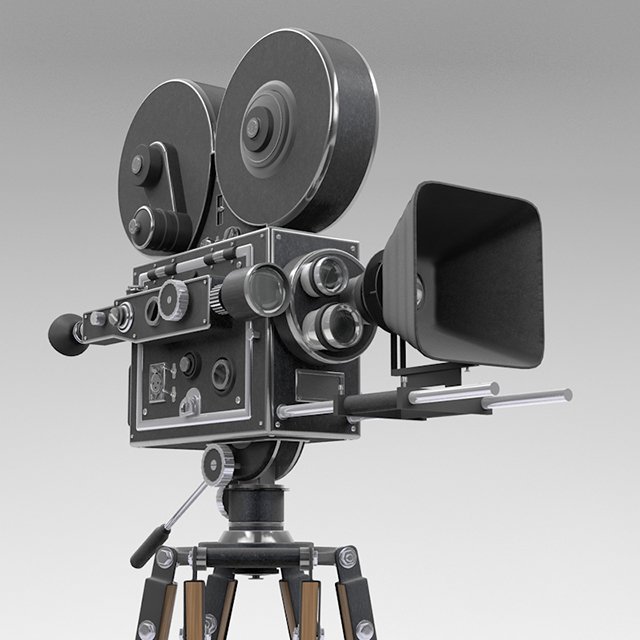
source
The television camera has only one thing in common with the photograph camera: the lens. After the light enters the TV camera, it falls on a photoelectric element. This element converts the light image to an electric signal. This signal can be recorded on magnetic tape or it can be transmitted "live" to your television set.
An old TV camera
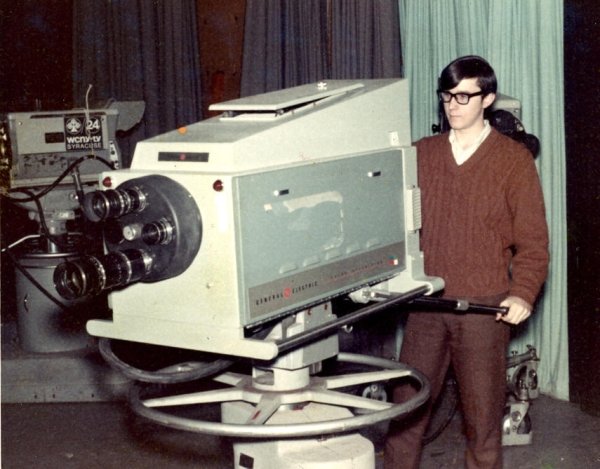
source
Modern cameras are built with many special features. For example, a camera may have both a built-in light meter (photometer), a range finder, a frame counter, and a flash attachment. Several new models are called instant loading since fresh film in a cartridge can be flipped instantly into place and be ready to roll.
Nowadays, digital cameras are present. It is a camera that produces images that can be stored in digital memory, displayed on a screen and printed on physical media. Most cameras produced today are digital, and digital cameras are incorporated into many devices ranging from PDAs and mobile phones (called camera phones) to vehicles.
Digital camera
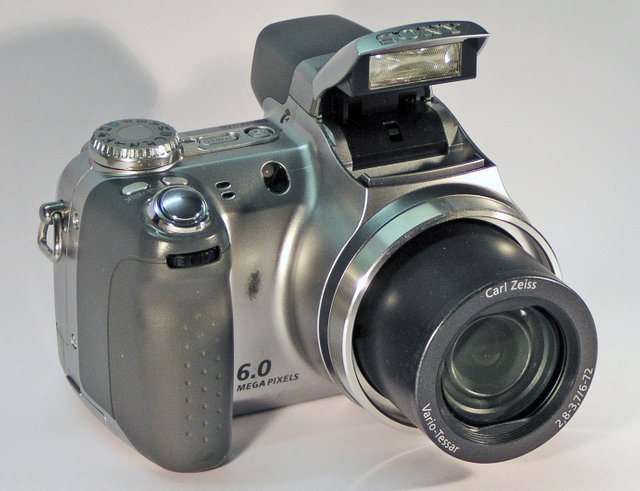
source
A single-lens reflex (SLR) camera
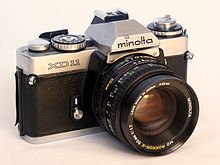
source
Digital Single-lens reflex (DSLR) camera
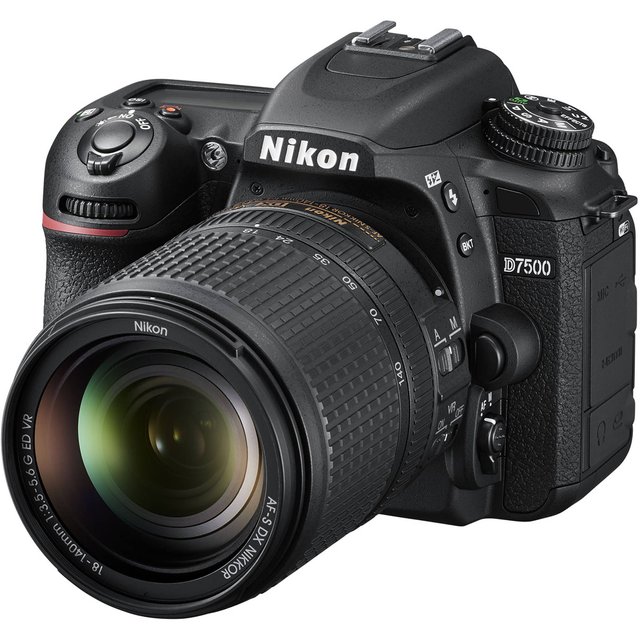
source
Sample of a car "dash camera"
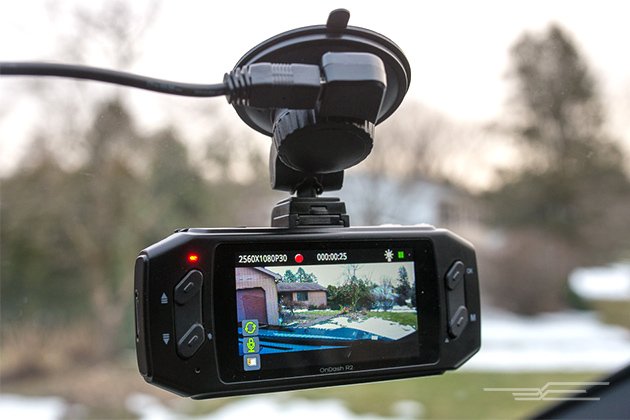
source
Cellphone cameras
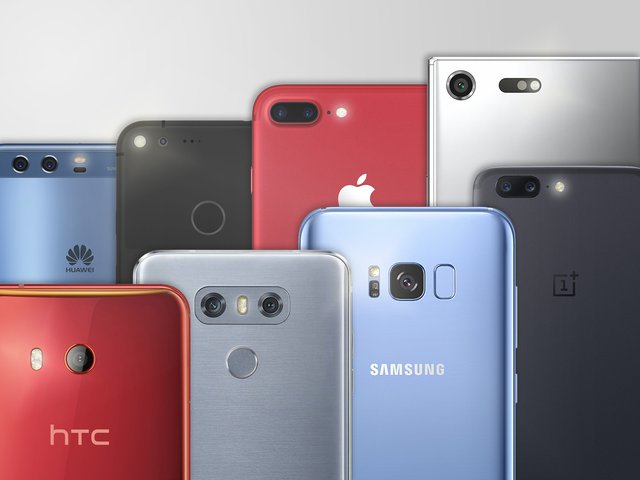
source
The most important parts of any camera are the quality of its lens system and the design and timing of the shutter.
Things to do
How does a camera work
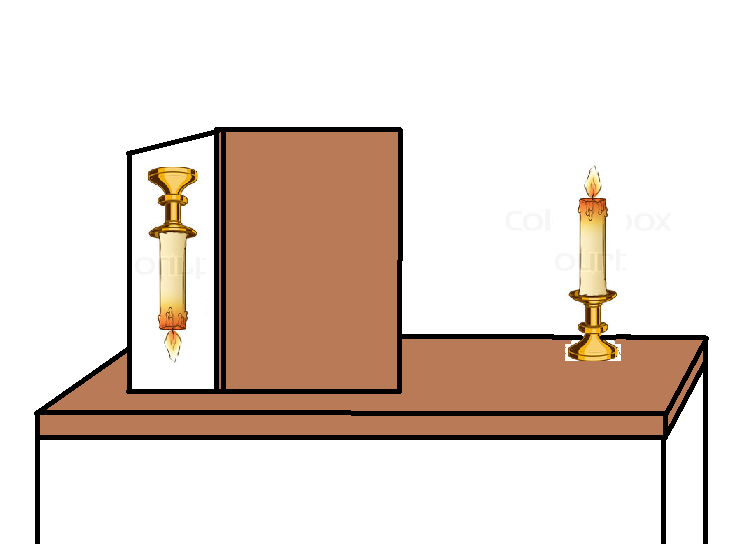
Material: cracker box, tissue paper, candle
Cover an open end of a cracker box with white tissue paper. Tape it securely in place to avoid wrinkles in the paper. Make a pin hole in the center of the closed end of the box.
Take the "camera" into a dark room. Set a lighted candle two feet in front of the pinhole. Stand behind the "camera" and observe the pattern on the tissue paper.
Since light travels in straight lines the top of the flame will show on the bottom of the picture on the tissue paper. The image is upside down.
Making a camera that works
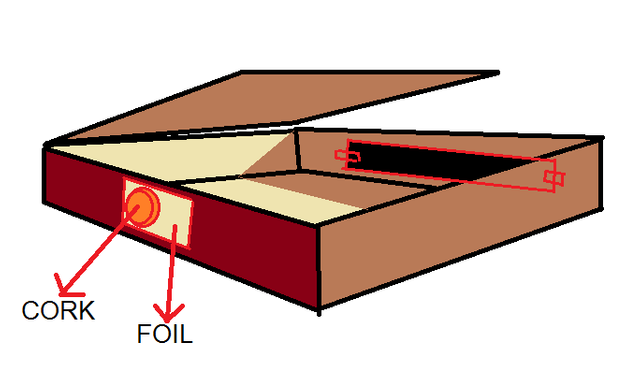
Material: Cigar box, cork, foil, photographic film, developer
A homemade camera may be constructed which will take pictures on film. This project is for the more experienced photographer.
Drill a half-inch hole in one end of a cigar box. Find a cork that fits tightly into this hole. On the inside of the box tape a one inch by one inch piece of foil over the hole. Take a needle and punch a clean hole directly in the center of a foil.
In a dark room tape a piece of photographic film on the end of the box directly opposite the needle hole. Fasten the lid of the box tightly with tape, and be certain the cork is in before going out in the daylight.
Point the camera at an object. Rest it on something to keep it from jiggling and distorting the picture. Remove the cork for one or two seconds depending on the brightness of the day. Quickly replace the cork, return to a dark room, and develop the film.

-Steemit Digest
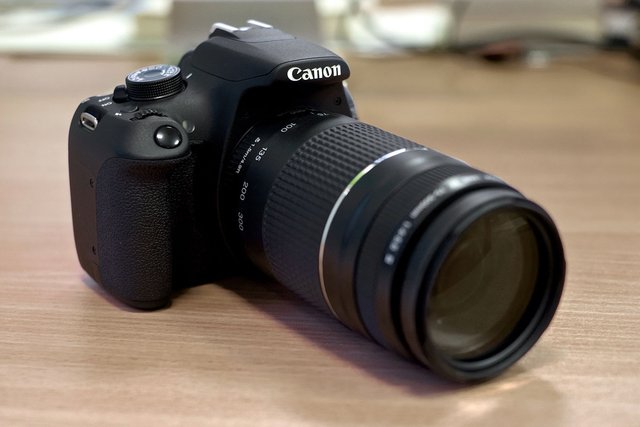
Nice info now i know it work
Very interesting - I am busy with my gr 4 kids on how things changed over time so we spoke about cameras - I am going to show them this
@steemdigest. Please could you add some references for any material you used for this post. Once you add the references we can support your post. Thank you!
Oh you meant the sources of my research? oh i can't recap them. Next time. Thank you very much!
Yes, if you don't source the resources we can not support your posts unfortunately. Please cite all sources in future.